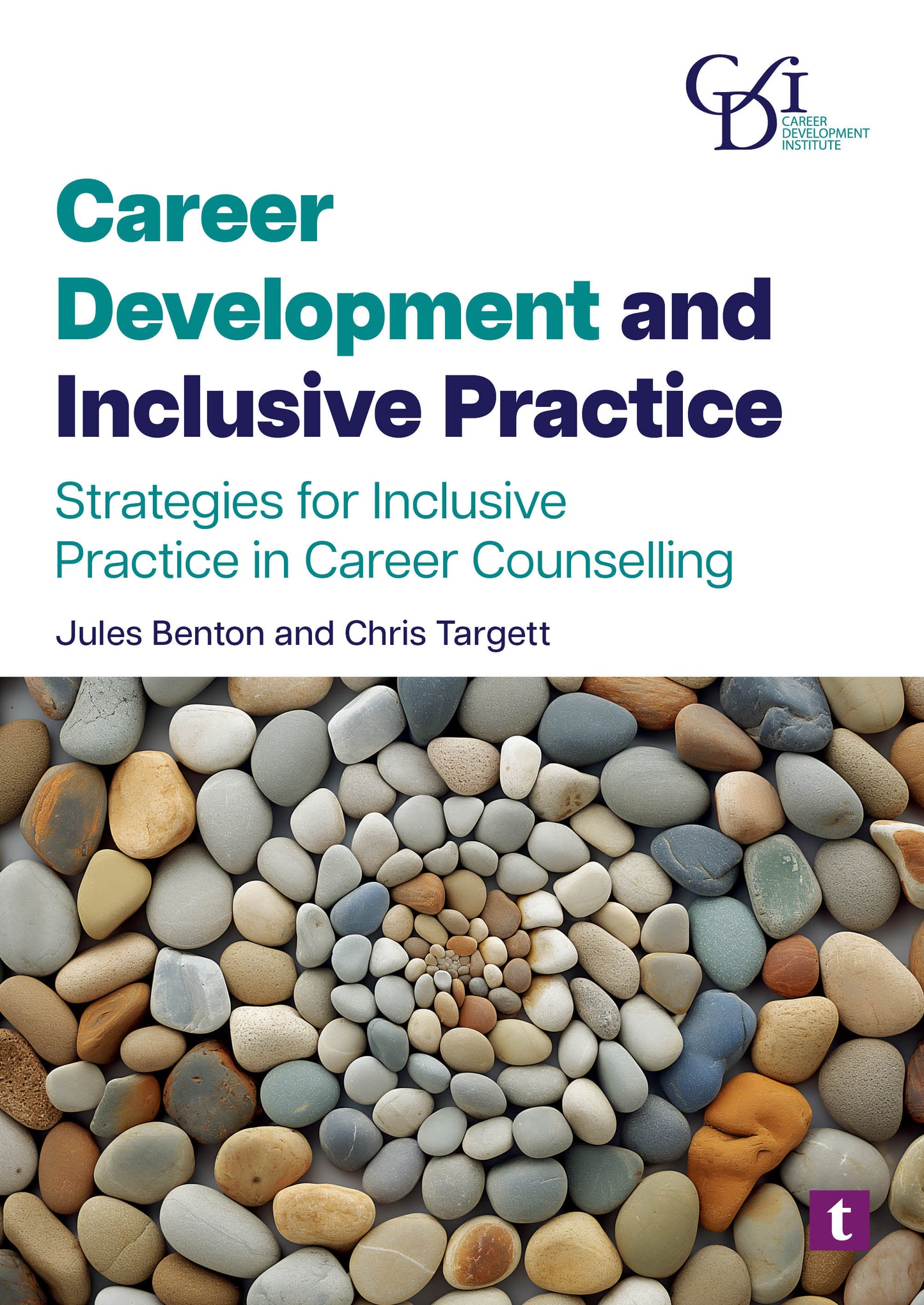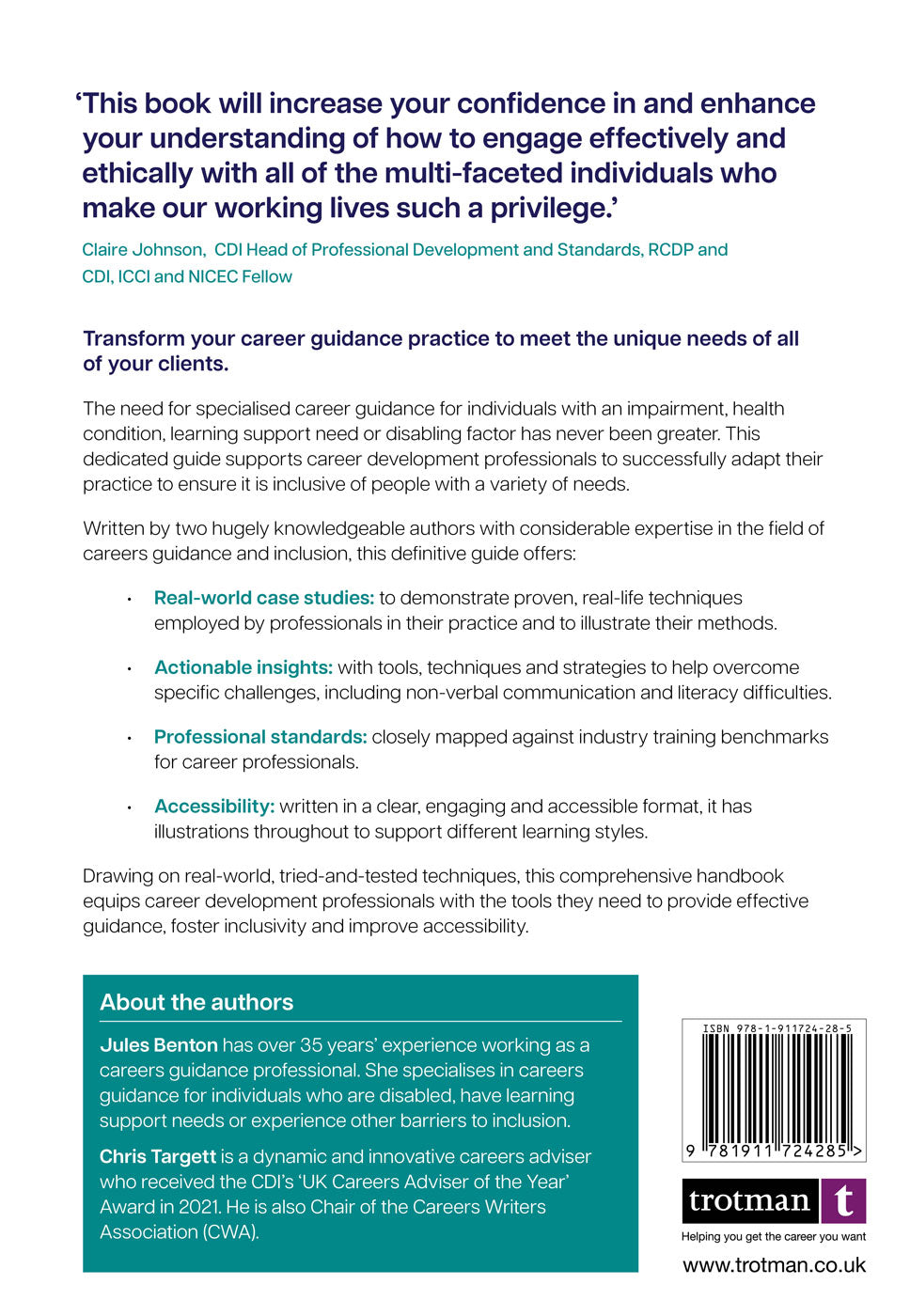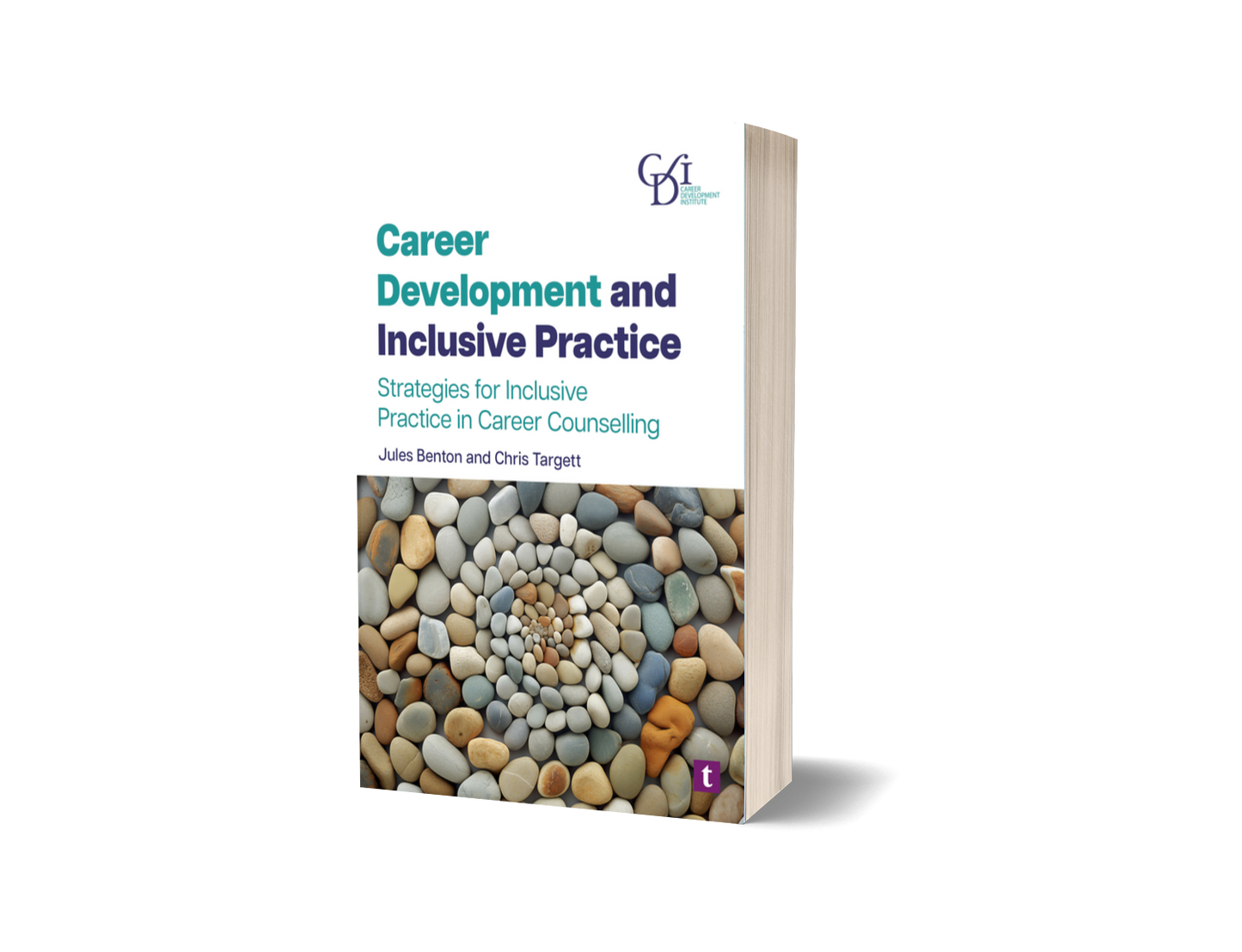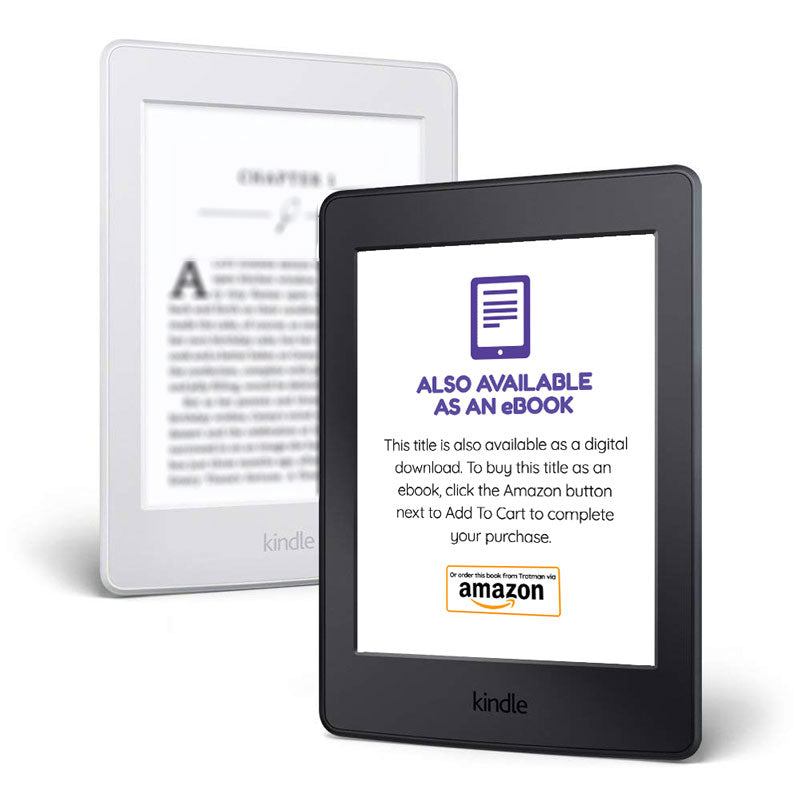Career Development and Inclusive Practice Resources
Dive deeper into the insights shared in Career Development and Inclusive Practice with this curated list of valuable websites by authors Chris Targett and Jules Benton.
Explore the topics that caught your interest in the book and find reliable, handpicked resources to expand your knowledge and support your journey. Simply choose a topic from the list below and start exploring!
Plus three brand new printable resources!
Impairments and conditions
Directories of conditions
Autism
The Autism Services Directory has a useful UK-wide directory of employment services to support employees with autism:
- The National Autistic Society;
- Social stories;
- autism medical information;
- autism and gender dysphoria
- Non-verbal Autism: Listen is a short film in which nonspeaking autistic people talk about how nonspeakers are represented in books, theatre and film. They provide guidance for changing the narrative. Learn more and access transcripts, translations and a toolkit here: https://communicationfirst.org /LISTEN
Cerebral Palsy
Dysarthria
Dyscalculia
Hearing Impairment
RNID;
the National Deaf Children’s Society
British Deaf Association (BDA);
Hearinglink also provide a series of subtitled videos covering topics such as how the ear works, audiology appointments, tinnitus, balance issues and technology.
SENSE for everyone who is deafblind and/or living with complex disabilities.
Deaf with a capital D
Cochlear implants or hearing aids
Hearing loss and the voice
Smartphone alerting system
Common ear conditions
https://rnid.org.uk/information-and-support/ear
-health/common-ear-conditions
Learning difficulty/disability
Mental Health
- Time to Change
- Mind
- NHS Every Mind Matters
- Samaritans
- The Health and Safety Executive
- The Department for Work and Pensions (DWP) Health, Work and Wellbeing initiative webpage
- Mental Health First Aid (MHFA) is an educational course which teaches people how to identify, understand and help a person who may be experiencing an episode of mental ill health.
- Mindful Employer provides employers with information and support for staff who have a mental health condition.
Pathological demand avoidance
Post-traumatic stress
Vision impairment
Colour blindness/Colour Vision Defects (CVD): Types of Colour
Blindness
Access strategies available for those with visual impairment
SENSE for everyone who is deafblind and/or living with complex disabilities
Auditory illusions
Co-occurance, Comorbidity and multimorbidity
Assisted communication and technology
National Registers of Communication Professionals
To check if a communication professional is registered, use the National Registers of Communication Professionals working with Deaf and Deafblind
People (NRCPD)
Sign language interpreters and deafblind interpreters in Scotland
Sign language interpreters and deafblind interpreters in Scotland register with the Scottish Association of Sign Language Interpreters (SASLI) or NRCPD, or both.
Jamie Knight’s website
There are some good explainers on Jamie Knight’s website.
Assistive technology
You can see some examples of AAC here:
The National Association for Special Educational Needs
The National Association for Special Educational Needs (nasen) miniguide
on Assistive Technology.
Organise, co-ordinate, complete and share tasks
To organise, co-ordinate, complete and share tasks: Asana, Remember the Milk,
Due, Evernote, Dropbox, Priority Matrix, RescueTime, Wunderlist, ColorNote.
- Budgeting: YNAB;
- Always late? Navigation apps such as Waze;
- Help with passwords: LastPass;
- Calming down: Headspace, Calm, Breathe2Relax, BOLD Tranquility, Yoga
Nidra, Naturespace.
And some that are more costly, but specifically made for disabled people or education support needs such as:
Accessibility and screens
If you are looking at a screen together you can change your settings to offer an accessible experience:
Avoiding information overload
Liane Hambly – teaching skills instead of providing info
Autism Virtual Reality Experience
Careers offers
Communication
Temple Grandin
Foundation for people with learning disabilities
CHANGE People video – How can I communicate better with people with learning disabilities
Ethics
The CDI
https://www.thecdi.net/about-us/cdi-code-of-ethics
Inclusive by Design
What Is Inclusive Design? A Beginner’s Guide [2024]
Neurodiversity Tips: Using Whiteboards, Earbuds, Authentic Self, Pomodoro technique, Talk to your client | CXK’s Careers Practitioner Tips
Inclusive by Design Career Posters – CXK
Qualifications ladder: Ladder Levels
Are you Open Day Ready?
Centre for Excellence in Universal Design
A guide to using subtitles, captions and transcripts for accessibility
Text accessibility
- https://www.bdadyslexia.org.uk/advice/employers/creating-a-dyslexia-friendly-workplace/dyslexia-friendly-style-guide
- https://disabilitease.com/best-and-worst-font-types-visually-impaired/
- https://www.cs.cmu.edu/~jbigham/pubs/pdfs/2017/colors.pdf#:~%20:text=McCarthy%20and%20Swierenga%20stated%20that%20poor%20%20color%20selections,blue%2Fyellow%20pairs%20were%20chosen%20%20by%20people%20with%20dyslexia
How to Find and Enjoy Your Computer’s Accessibility Settings | Microsoft Windows
Get started with accessibility features on Mac – Apple Support (UK)
Making Chromebooks accessible for people with disabilities
Dyslexia Style Guide 2023 (PDF)
Examples of info for young people
- CXK
- This is an example from Liberty: Careers (libertygroupltd.co.uk) which helps to prepare learners
- Poster which explains the service in a simplified manner to help prepare students
Models of Disability and Disability Rights
Disability Rights UK
Disability Rights UK is the UK’s leading organisation led by, run by and working for disabled people.
Telling people you’re disabled: a clear and easy guide
for students: https://www.disabilityrightsuk.org/resources/telling-people-you%E2%80%99re-disabled-clear-and-easy-guide-students
Right to Participate project: funded by the Legal Education Foundation
The project aims to increase awareness of the Equality Act, especially the ways it can protect disabled people from discrimination in everyday situations.
Sharing and Disclosure – Disabled Students UK
Disclosure and requesting
adjustments: https://disabledstudents.co.uk/resources/disclosure-and-requesting-adjustments/
Equality and Human Rights Commission
Social model – Disability Wales
Social model – Inclusion Scotland
Introduction to the Social and Medical Models of Disability
Disability: quick start guide for service providers
The social model of disability – Sense
Models of Disability: Types and Definitions
Liberating the NHS: No decision about me, without me
Nothing Without Us: Experiences of Disability | Pitt Rivers Museum
Through the Patient's Eyes. Salzburg Seminar Session 356, 1998
Intersectionality
- https://www.verywellmind.com/what-is-intersectionality-7097945
- https://www.disabilityrightsuk.org/resources/inclusion-and-intersectionality-online-resource-support-disabled-people%E2%80%99s-organisations
- Ableism classifies entire groups of people as ‘less than’ https://www.youtube
.com/watch?v=_b7k6pEnyQ4 - https://www.theguardian .com /society/2023/jul /11/jason -arday
-cambridge-university-youngest-black-professor
Support for disabled people
Disability Rights UK
Disability Rights UK offers lots of useful information on access and reasonable adjustments: https://www.disabilityrightsuk.org/training-consultancy
Contact’s directory of conditions
Contact’s directory of conditions will signpost you to organisations supporting specific types of impairment or disability.
The Business Disability Forum
The Business Disability Forum provides fact sheets on a range of physical disabilities for their members.
Disabled Apprentice Network (DAN)
Disabled Apprentice Network (DAN) brings together Disabled apprentices and those who have finished their apprenticeship. It’s a lively and friendly forum to share your experiences and offer views on what could improve apprenticeships for Disabled people.
Families planning together
Advocacy
- Coram Voice have a useful Advocacy toolkit for transition. It has a great jargon buster section.
- Providing Independent Advocacy under the Care Act – self-study pack
Access to work
- Gov. information
- Access to work: get support if you have a disability or health condition
- Apply for communication support at a job interview if you have a disability or health condition (Access to Work)
- In this video Diversity and Ability, Disability Rights UK and Evenbreak take you through the process of applying to Access to Work.
Maximus
Maximus provide mental health support
Grants and bursaries
Support to find work
- Support to work (Scope) – a free online and telephone support programme for disabled people who are looking for paid work.
- Sense – employment support for people with complex disabilities.
- Thomas Pocklington Trust (TPT) Employment Service – supports blind and partially sighted people wanting to start, restart or progress their careers.
- Evenbreak – where disabled candidates can search for jobs with inclusive employers
- Ambitious about Autism – offers autistic people aged 18 years and older the chance to showcase their skills and attributes in the workplace
- Diversity Jobs – collaborate with companies that prioritise Diversity and Inclusion, connecting candidates with the right skill set to the right employers, regardless of their background
Self-employment/Entrepreneurship
Work experience and volunteering
Disability Confident
The scheme has three levels designed to support employers on their Disability Confident journey, these are:
- Disability Confident Committed (Level 1);
- Disability Confident Employer (Level 2);
- Disability Confident Leader (Level 3).
Jules Benton & Chris Targett
Career Development and Inclusive Practice








